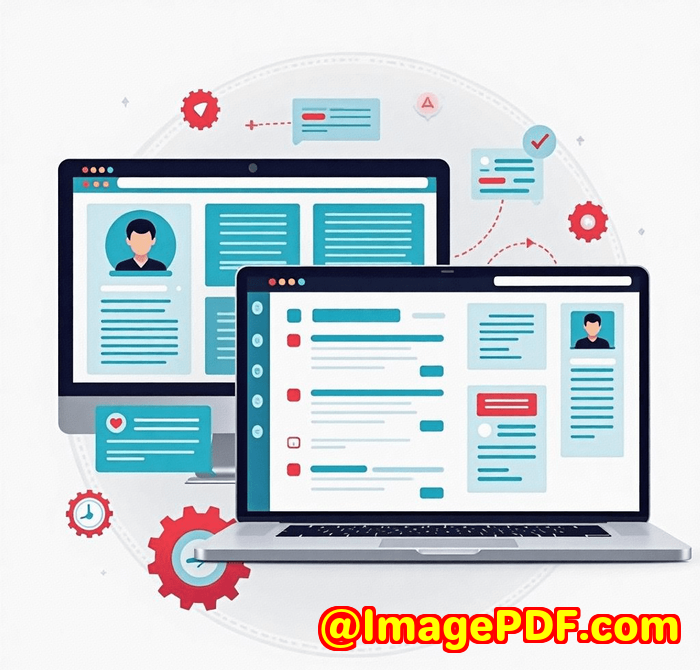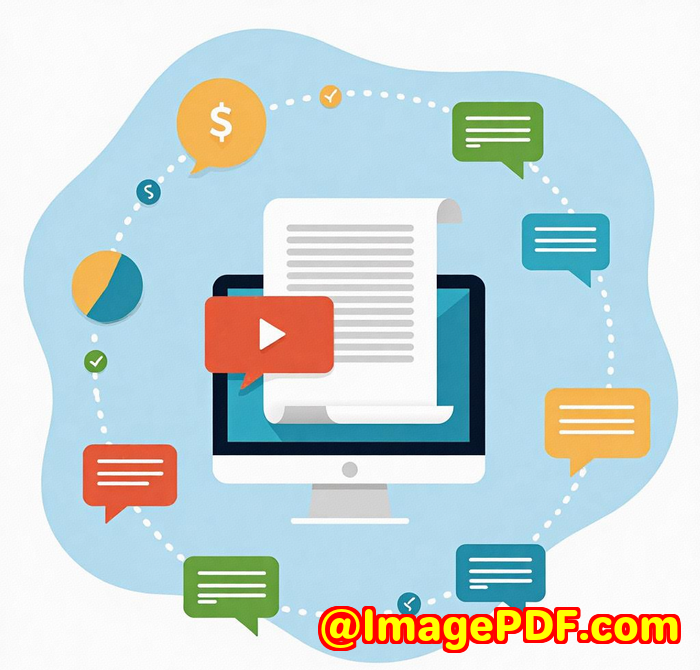Automate Document Generation for Insurance Agents Using imPDF HTML to PDF REST API
Automate Document Generation for Insurance Agents Using imPDF HTML to PDF REST API
In the insurance world, generating documents quickly and accurately is a non-negotiable necessity. Whether it's policy documents, claim forms, or renewal reminders, the process can be tedious, and mistakes can lead to missed deadlines or worsecustomer dissatisfaction. But what if there was a way to automate all of this and make the whole process a breeze?

As someone who's worked in industries where document automation was essential, I know how time-consuming and prone to error manual document generation can be. That's when I discovered the imPDF Cloud PDF low-code REST APIa powerful tool that transformed how I handled document generation for my team and, more importantly, how I helped insurance agents like you save countless hours each week.
Let me walk you through how this API works and how it could be the game-changer you've been looking for.
The Insurance Industry's Document Generation Woes
Before discovering imPDF, every insurance agent I knew (myself included) was stuck in a cycle of manually handling documents. Here's a snapshot of what it typically looked like:
-
Filling out lengthy forms for claims and policies
-
Converting documents from one format to another
-
Ensuring the right formatting across various platforms
-
Time-consuming data extraction from PDFs
-
And let's not forgetdealing with errors that cost time and lead to unnecessary back-and-forth with clients
It was frustrating. A lot of time was spent dealing with the technical side of things rather than focusing on what really mattered: helping customers and closing deals.
Discovering the Solution: imPDF Cloud PDF REST API
That's when I found imPDF Cloud PDF low-code REST API, a tool designed specifically to address document automation issues like the ones I just mentioned. Using Adobe PDF Library technology, imPDF offers one of the most powerful PDF processing APIs available, designed to integrate seamlessly into workflows.
With imPDF, I was able to automate document generation, PDF conversions, and much more without needing deep technical expertise. What stood out to me was how simple and fast it was to get up and runningno installations or complex setup. You generate an API key, plug it into your code, and you're good to go. It's as simple as that.
Key Features That Changed the Game for Me
Here's why I'm such a fan of the imPDF Cloud PDF API:
1. HTML to PDF in Seconds
One of the most significant pain points I had was trying to convert HTML files into PDFs. Imagine the hassle of generating invoices or claims, and then having to manually tweak the formatting, fonts, and layout to make everything look perfect.
With imPDF, I can convert HTML to PDF in less than 2 seconds. The API supports everything from standard HTML to CSS3 and even HTML5which means no more worrying about outdated libraries or formatting errors. I've used it to convert insurance forms into neat, professional PDFs with all the styling intact.
Real Example:
Once, we needed to generate a series of claims documents quickly for a last-minute deadline. The imPDF API took care of the conversion automatically, and we had polished PDFs ready to send to clients within minutessomething that would have taken hours manually.
2. Automated PDF Form Handling
Insurance documents often require forms for customers to fill out, such as personal details, policy information, or claim statements. Extracting data from these forms and processing them used to be a huge hassle, especially when they were in PDF format.
imPDF's PDF Forms Cloud API makes it effortless to handle these forms, whether it's extracting field values, locking fields, or even converting forms like XFA to Acroforms.
For example, when processing customer claims, I use the imPDF API to automatically extract the customer's name, policy number, and claim details from a form, streamlining the process for quicker responses and fewer errors.
3. Multi-format Conversion (PDF to Word, Excel, PowerPoint)
Insurance agents don't just need PDF-to-PDF conversion; they often need to extract data from PDFs and put it into other formats for analysis or reporting. The PDF to Office Cloud API handles this effortlessly, enabling conversions from PDF to Word, Excel, or PowerPointall with a high level of fidelity.
This is a game-changer when handling large volumes of claim data or policy documents. I've used this feature to convert PDF invoices into Excel spreadsheets, which I could then use to analyse claim amounts or calculate commissions in minutes rather than hours.
4. Security and Compliance (HIPAA-Friendly)
The insurance industry is highly regulated, especially when it comes to handling sensitive customer data. This was always a concern for me when dealing with PDFs. But with imPDF, data privacy is a top priority.
Not only does the API guarantee HIPAA compliance, ensuring customer data remains secure, but it also supports storing documents in your own Amazon S3 bucket, meaning you have full control over the security of your files.
Personal Example:
Handling health insurance claims means dealing with a lot of sensitive medical data. Using imPDF ensured that all document processing was HIPAA-compliant, and I could confidently store and manage our clients' information in our own secure cloud storage.
The Real Benefits of imPDF for Insurance Agents
If you're in the insurance industry, you know time is money. Here's how imPDF has helped meand how it can help you:
-
Streamlined document generation: Whether you're dealing with claims, policies, or customer details, imPDF automates the creation and processing of documents.
-
Faster customer service: No more waiting for documents to be manually processed. With automated workflows, you can respond to clients more quickly, improving satisfaction and retention.
-
Reduced errors: Automated conversions and form handling significantly reduce human errors, ensuring your documents are accurate and professional.
-
Improved efficiency: Instead of spending hours converting files or dealing with document formatting, imPDF does the heavy lifting, saving you countless work hours.
-
Cost savings: By automating document processing, you reduce the need for manual labour, making your operation more cost-effective in the long run.
Why imPDF is Perfect for Insurance Agents
The nature of the insurance industry means you're constantly dealing with bulk document generationpolicies, quotes, claims, renewals, etc. imPDF's Cloud PDF API is designed to streamline these processes, allowing insurance agents to:
-
Convert documents from HTML to PDF or from PDF to Office formats with ease.
-
Handle form data extraction and form field lockingcritical when dealing with customer info.
-
Save time by eliminating repetitive, manual tasks, and free up your team to focus on customer service.
Conclusion: My Personal Recommendation
If you're an insurance agent or work in a similar industry where document automation is a daily task, I'd highly recommend giving imPDF a try. It's fast, secure, and powerfuleverything you need to automate document generation and improve your workflow.
Click here to try it out for yourself: https://impdf.com/
Whether you're looking to convert HTML documents into PDF forms, automate your PDF workflows, or simply ensure that your team is working as efficiently as possible, imPDF is the tool you need to make that happen.
Custom Development Services by imPDF
For those with more specialized needs, imPDF offers comprehensive custom development services. From creating tailored solutions for Linux, macOS, and Windows, to developing custom utilities for Python, PHP, C/C++, JavaScript, C#, and moreimPDF's team can handle any PDF-related project you throw their way.
FAQ
1. How can I automate document generation for my clients?
By using imPDF's HTML to PDF API, you can easily convert HTML documents (including forms and templates) into PDFs automatically.
2. Does imPDF support document editing?
Yes, imPDF allows for PDF editing, including form field extraction, data entry automation, and PDF conversion between various formats.
3. Is imPDF HIPAA-compliant?
Yes, imPDF's conversion technology is fully HIPAA-compliant, making it ideal for handling sensitive customer data in the insurance industry.
4. How do I integrate imPDF into my existing system?
imPDF provides a low-code REST API that integrates seamlessly with your existing systems. All you need is an API key to get started.
5. What other industries can benefit from imPDF?
Beyond insurance, imPDF is suitable for healthcare, legal teams, finance, and any industry that requires document automation and conversion.
Tags or Keywords
-
imPDF Cloud API
-
PDF conversion for insurance
-
Automate document generation
-
HTML to PDF conversion
-
PDF form automation



